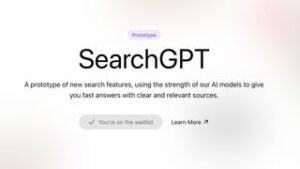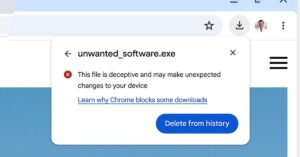/cdn.vox-cdn.com/uploads/chorus_asset/file/25245641/desktop.png)
There’s another company vying to be the place you go to manage your time. It’s called Amie, and it’s one of the best-looking calendar apps I’ve used. It’s available today for iOS, Mac, and the web after four years in development and many months in beta testing. I’ve been using it off and on for a long time, and I like it a lot.
The first thing that drew me to Amie was that it’s set up to be a combination of a task list and a calendar. You have lists of tasks in the left sidebar, and you then drag tasks into the calendar to give them a time slot. Each calendar event is like its own task, too, and you can check them off as you go through your day. A lot of smart productivity people will tell you that time blocking is the best strategy for being productive and that the best way to make sure you get something done is to put it on your calendar. Amie incentivizes good behavior on that front, and I like having a view of my time and my tasks right next to each other.
Amie’s also one of the best-designed calendar apps you’ll find. It’s clean and simple by default, hiding a lot of the ugly metadata that comes with a calendar. It’s easy to share your calendar with someone for scheduling purposes or duplicate a meeting if you want to have another one next week. The mobile app defaults to a really nice split view, with events up top and tasks on the bottom, and you can swipe up or down to see more of something. Of the apps I’ve tested, only Cron (which is now Notion Calendar) can match Amie aesthetically.
But look: it’s a calendar app. It shows your days on a grid, lets you join calls, you get the idea. There are a million calendar apps out there, and odds are, you use either Outlook or Google Calendar and you’re reasonably happy with it. So I ask Dennis Muller, Amie’s founder and CEO, why he’s building a calendar app. He tells me he didn’t really mean to.
What became Amie actually started with an idea about maps. “The initial spark came from this one sentence: how would Google Maps look if it was designed to reach personal goals?” (Who said this sentence, Muller doesn’t say.) “Not like ‘New York to Boston,” he continues, “but ‘I know nothing about music and I want to play the saxophone.’” In a sense, it’s simple: play the saxophone an hour a day for a year, and you’ll get good. But where do you plan and track that progress? The more he thought, the more the answer was obvious: your calendar. So Muller set out to build a calendar app.
What Amie is building is a combination of calendar, journal, and full-on productivity suite
What he’s building now, he says, is a combination of calendar, journal, and full-on productivity suite. Muller wants Amie to be a place you can go back to to remember your life, to know what was going on, what you were doing, what happened at any moment on any day. And he wants to help people plan and do everything in their lives, not just the meetings they have to go to.
Muller also imagines the calendar as a sort of social network. “The question we pose to ourselves is, what would happen if your 10-15 closest friends had at least free / busy access to your calendar?” he asks. What if, he wonders, you even gave your friends the ability to add stuff to your calendar without your permission? He thinks calendar sharing could help people connect and coordinate more easily and even discover new things to do together. It’s an idea much like the one Daybridge has been thinking about for the last couple of years: how do you turn calendars from a business tool into a part of everyone’s everyday lives that not only tells you where to be but also tells you something about your time there?
“What would happen if your 10-15 closest friends had at least free / busy access to your calendar?”
The app already shows small bits of all this ambition. You can share your calendar with anyone you like and quickly see your favorite contacts’ calendars on something of a speed dial. You can connect Amie to Spotify and log which songs you were listening to throughout the day; you can sync it with Apple Health and log your workouts and meditations or even see your heart rate spike during a particularly stressful meeting.
Amie is also launching an email client inside of its calendar app, based on the theory that a lot of your email is about time: scheduling stuff, appointment confirmations, and more. It’s not going to replace Outlook or Mimestream, but Muller sees it as another way to tackle some of your inbox. “Snoozing an email is scheduling it, right?” Muller says. So on your calendar it goes! Amie’s plan is to integrate with many more of these services you interact with all day, build some more social and tracking features into the app directly, and become a running repository of all the stuff that makes up your life.
When I point out that, okay, email makes sense to have adjacent to your calendar because it’s a time-centric thing, but you could say the same for notes and spreadsheets and the Kindle app and video chat clients and basically everything else, Muller just smiles. “We try to do embarrassingly much,” he says. He thinks it might be fun to build some of those other things, integrate with others, and just sort of see what happens. Muller says a few times in our conversation that Amie’s development has been anything but linear and straightforward, that there’s a real just-try-stuff energy to the company. He uses the phrase “fuck around and find out feature” to describe a lot of the things he wants to build. Maybe that’s why Amie took four years to launch. But maybe, he hopes, that’ll also be what makes it special.
For now, Amie will appeal mostly to power calendar-ers like me, who are forever looking for slightly better ways to manage their time. Amie’s charging a subscription fee, and Muller says he expects most of Amie’s revenue to come from corporate use. But ultimately, the company hopes to break out of the nine-to-five. Because it thinks your calendar should be much more than a list of meetings.





